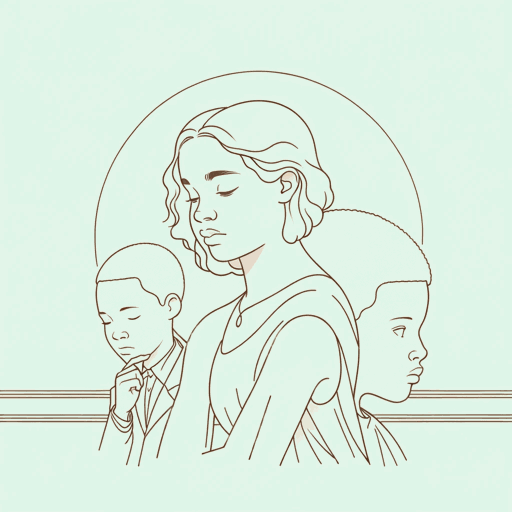52 pages • 1 hour read
Beverley NaidooThe Other Side of Truth
Fiction | Novel | Middle Grade | Published in 2000A modern alternative to SparkNotes and CliffsNotes, SuperSummary offers high-quality Study Guides with detailed chapter summaries and analysis of major themes, characters, and more.
Summary and Study Guide
Overview
The Other Side of Truth is a young adult novel by South African writer Beverley Naidoo that was published in 2000. The work is set in both Nigeria and in London, and it takes place after the 1995 Nigerian execution of Ken Saro-Wiwa, a writer and activist who spoke out against Nigeria’s military government’s corruption. Sade is the novel’s protagonist. The story is written in the third person, and it follows the journey of Sade and her brother to London.
Naidoo provides a brief background of this history in an author’s note at the end of the novel. Naidoo was both a political exile and a political prisoner who eventually left her native South Africa for England at age 22.
This study guide refers to the 2000 HarperCollins paperback version of the novel.
Plot Summary
The novel opens in Nigeria when Sade’s mother is shot. Her mother is not the intended target; the assassins were trying to kill Sade’s father, Folarin, because he frequently exposes the injustices and corruption of the current military regime in power. For the safety of Sade and her brother, Femi, they do not have time to grieve their mother, as they have to leave immediately with a stranger on a plane to seek safety in London.
When they get to London, their escort, Mrs. Bankole, abandons them, and Uncle Dele, whom they are supposed to meet there, is missing. Eventually, the children make it into the foster care system, where they find guardians who wish to help them. They first stay with Mrs. Graham, their emergency foster mother. Her son, Kevin, is unkind to the children. They then go to stay for a longer time with Auntie Gracie and Uncle Roy, who have grown children and devote their resources to helping Sade and Femi. While both children are in exile, Sade must make most decisions on her own, as her brother withdraws into himself.
A key subplot in the novel pertains to some of the children Sade goes to school with. She befriends a fellow African exile named Mariam. There are numerous bullies at the school, but the two most overt ones are Marcia and Donna. Marcia, in particular, does not like people from Africa, and they both taunt Sade and Mariam for being African. They relay stereotypes of Africa and African people. As Marcia and Donna bully Sade, she has to decide whether Speaking Out Against Injustice or keeping quiet to protect her brother is the better option. In this way, this subplot in Avon School mimics the larger narrative in which Folarin was forced to choose whether to speak out or to be quiet for the safety of those around him. Sade makes a different decision from her father, but she has internalized many of his values, so she is consumed by shame over the decisions she makes. She wants to consult her father for advice, but she cannot.
Through a twist of fate, the children are reunited with their father, who came to London on a fake passport when he learned his children were missing. He is being detained because he did not follow the proper channels for those seeking political asylum. Still, the children are able to visit him, and he has legal representation. When it looks like Folarin might be sent back to Nigeria, Sade and Femi contact a local newsman, who shares their story on the air and generates a lot of publicity. At the same time, Folarin goes on a hunger strike. These combined efforts help persuade the British government to grant Folarin and his children temporary asylum. The novel ends with the family together but uncertain as to their future.
The Effects of Political Corruption and The Centrality of Family Bonds are two key themes that are explored in the novel, as is the importance of Speaking Out Against Injustice. For both Folarin and Sade, the values of honesty, courage, and protecting family are at odds with each other at times. Folarin chooses courage and honesty; as a result, his wife is killed, and his family is sent into exile. Sade chooses protecting her family over truth and integrity and ends up consumed with guilt. Because both options bring both good and harm, the novel remains nuanced in its presentation of the difficulties of each choice and avoids oversimplifying matters. Sade’s acknowledgement that sometimes values are at odds with each other and her ability to work within this nuance are keys to her process of maturation as a character. Both Sade and Folarin are tasked with tempering courage with wisdom.
Featured Collections
African Literature
View Collection
Books on Justice & Injustice
View Collection
Colonialism Unit
View Collection
Coming-of-Age Journeys
View Collection
Family
View Collection
Popular Study Guides
View Collection
Required Reading Lists
View Collection
South African Literature
View Collection
Truth & Lies
View Collection


